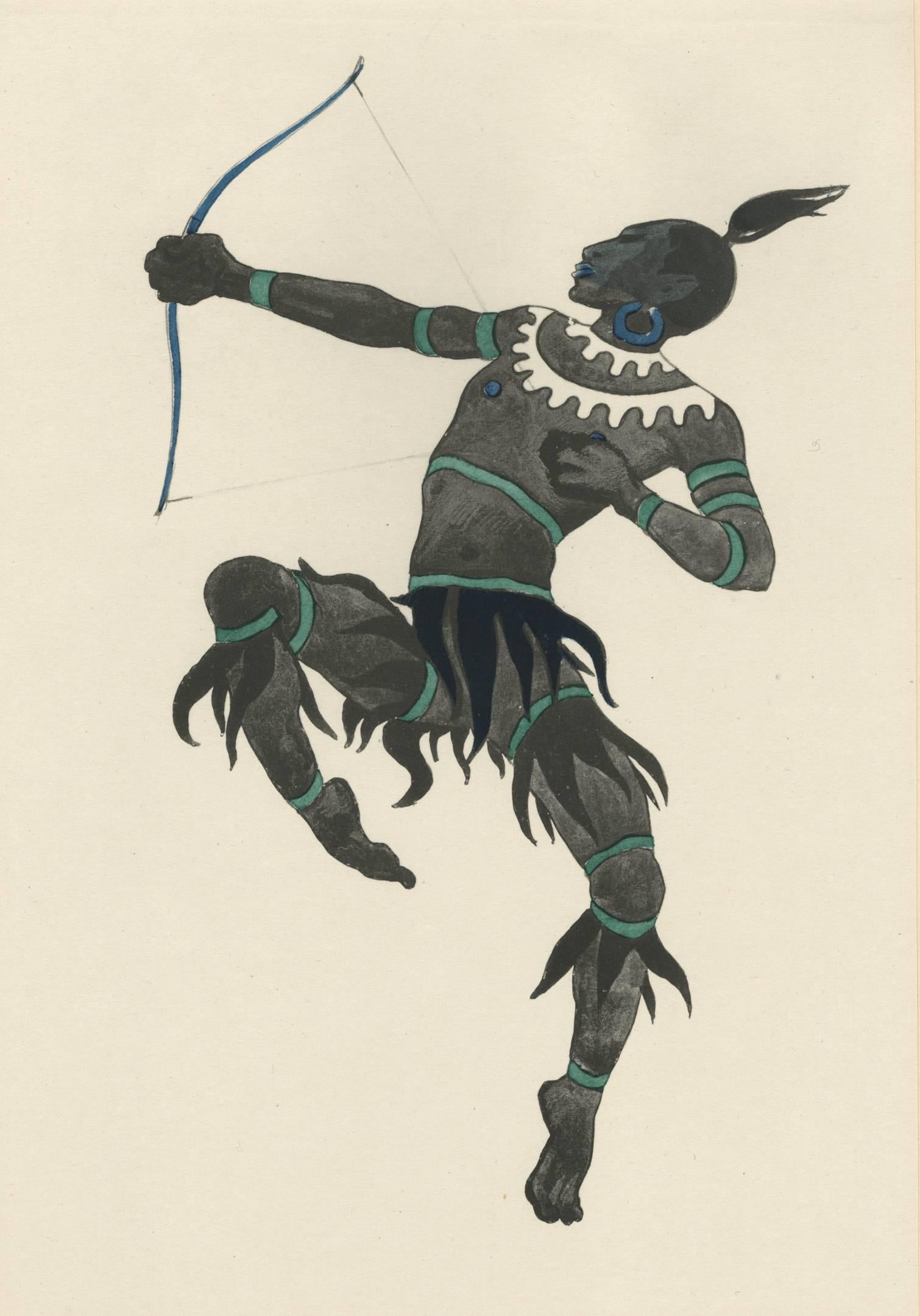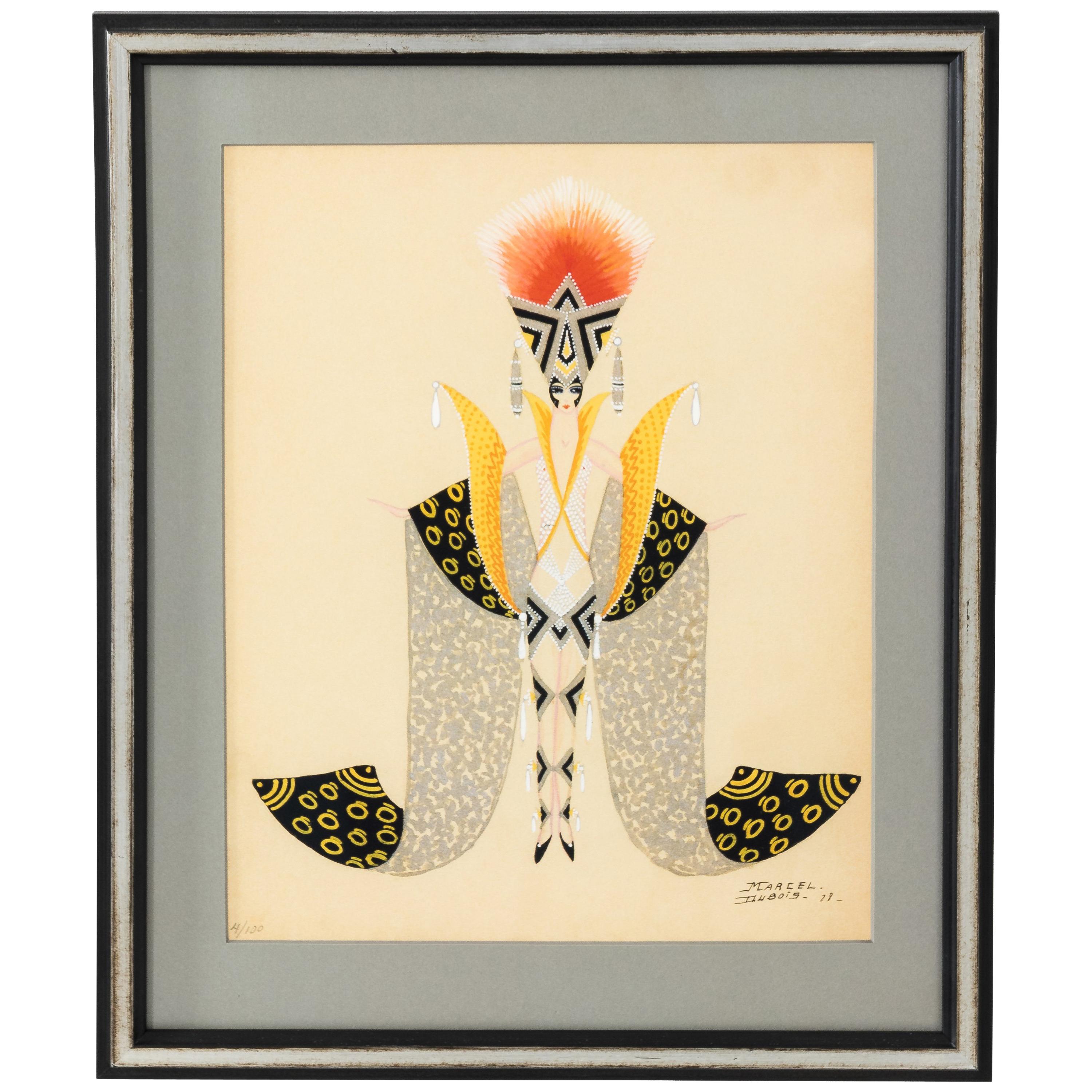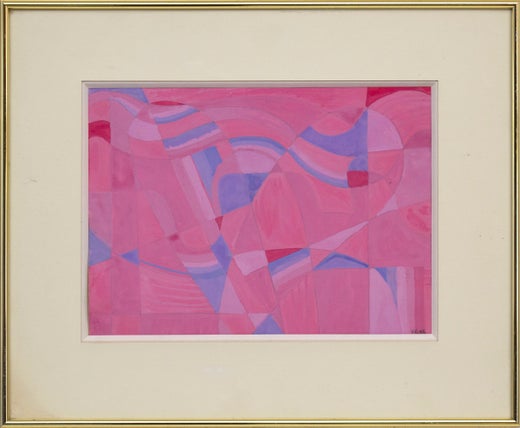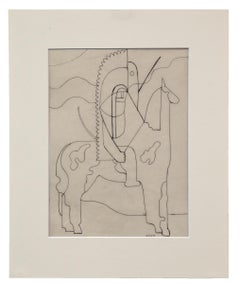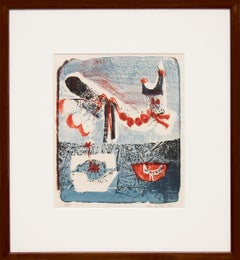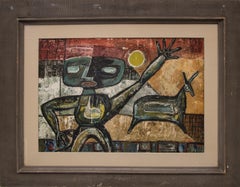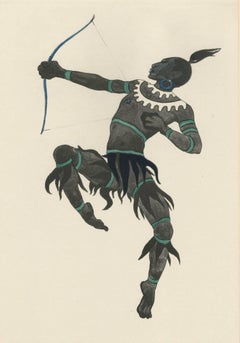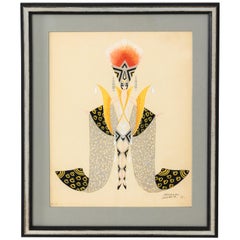Hilaire Hiler1930s Modernist Print by Hilaire Hiler: Indian with Bow in Fox Costume Artwork1934
1934
About the Item
- Creator:Hilaire Hiler (1898-1966, American)
- Creation Year:1934
- Dimensions:Height: 17.5 in (44.45 cm)Width: 15 in (38.1 cm)Depth: 1.5 in (3.81 cm)
- Medium:
- Movement & Style:
- Period:
- Framing:Frame IncludedFraming Options Available
- Condition:very good vintage condition. Frame and archival glass/materials have recently been added.
- Gallery Location:Denver, CO
- Reference Number:Seller: DCG-252311stDibs: LU2737667922
Hilaire Hiler
Hilaire Hiler was born in Saint Paul, Minnesota on July 16. 1898 and was raised in Providence, Rhode Island. He was an American artist, psychologist and color theoretician who worked in Europe and the United States during the mid-20th century. Hiler took art classes as a child at the Rhode Island School of Design. When he was older, Hiler studied at the Pennsylvania Academy of the Fine Arts, the Pennsylvania School of Industrial Art, Wharton School of Finance and Commerce and William Server's studio. He also studied at the University of Pennsylvania, the University of Denver, Golden State University and National College in Ontario, Canada. He continued to France, studying at the University of Paris in 1919. Hiler lived in Paris from 1919–34, supporting himself as a jazz musician and a piano player for The Jockey Club. Hiler moved back to America in 1934, settling in San Francisco. He was commissioned by the Works Progress Administration to paint murals in the Aquatic Park BathHouse, which is now the National Maritime Museum. In the 1940s, he founded Fremont College in Los Angeles. In 1944, he moved the college to Santa Fe which is now named Hiler College. He has exhibited widely across different countries. His works are held in Musee du Luxembourg, Santa Barbara Museum of Art. Museum of New Mexico, Veteran's Memorial Museum in San Francisco, Museum of Living Art in New York. Hiler died on January 19, 1966, in Neuilly-sur-Seine.
- ShippingRetrieving quote...Shipping from: Denver, CO
- Return Policy
More From This Seller
View All1930s American Modern Figurative Drawings and Watercolors
Ink
Mid-20th Century Abstract Abstract Prints
Lithograph
1960s Abstract Abstract Prints
Lithograph
1940s American Modern Abstract Paintings
Wax, Gouache
20th Century American Modern Animal Prints
Lithograph
1930s American Modern Landscape Prints
Lithograph
You May Also Like
1960s Abstract Geometric Abstract Prints
Lithograph
20th Century Art Deco Figurative Prints
Lithograph
1920s Art Deco Figurative Prints
Paper
Early 2000s French Art Deco Prints
Glass, Giltwood, Paper
1940s Art Deco Figurative Prints
Ink, Archival Paper
1940s Art Deco Figurative Prints
Ink, Archival Paper

